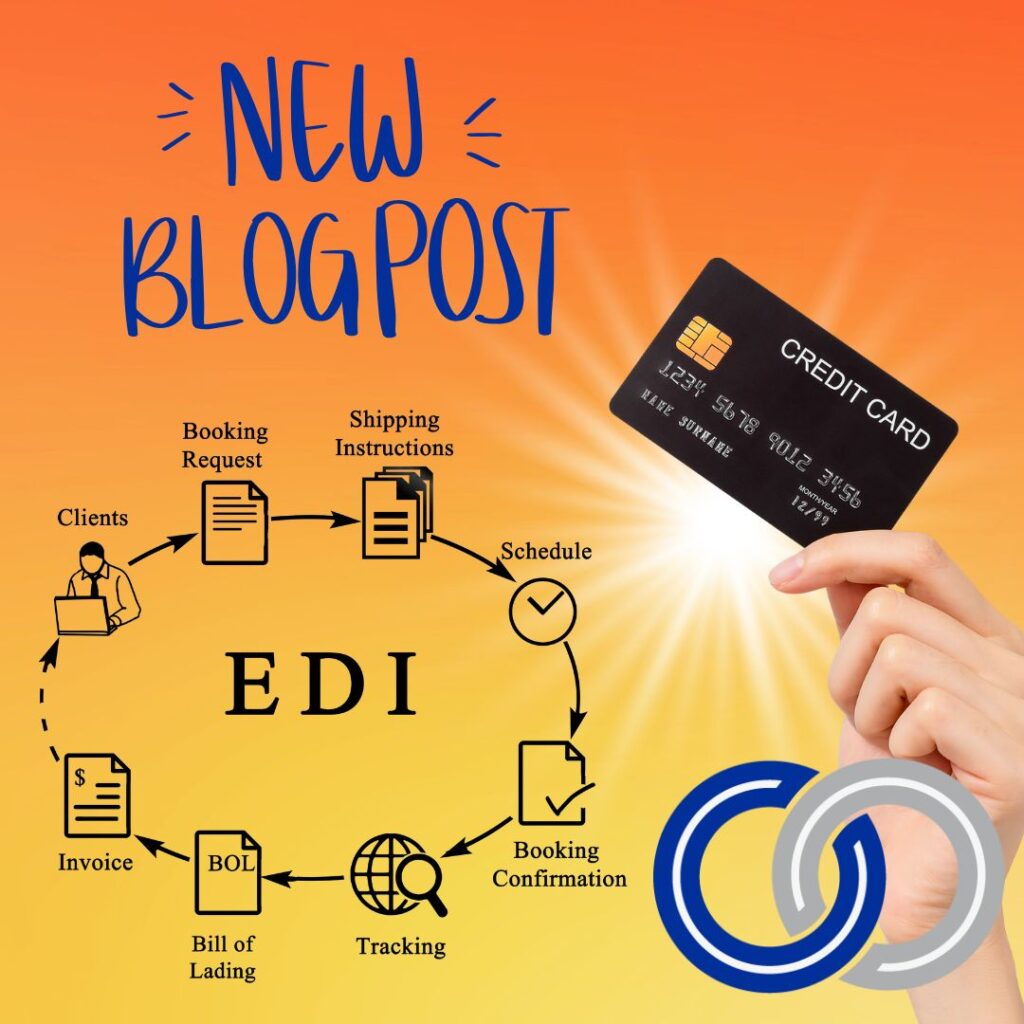Updated July 7, 2023
 It’s no surprise that today’s most successful supply chain companies do more and more of their business electronically—after all, so do most consumers. Industry leaders from AutoZone to Amazon and Walmart understand this, and it’s become abundantly clear to suppliers at each level up and down the supply chain as well.
It’s no surprise that today’s most successful supply chain companies do more and more of their business electronically—after all, so do most consumers. Industry leaders from AutoZone to Amazon and Walmart understand this, and it’s become abundantly clear to suppliers at each level up and down the supply chain as well.
Everywhere you look, businesses today find it necessary to accommodate their down-channel customers’ desire for and reliance on real-time transactions and information. For B2B, and B2B-fulfilling-for-C, interdependence, collaboration and flexibility are joining responsiveness, accuracy, and quality product as hallmarks of a successful business relationship.
This has a challenging ripple effect on their suppliers, carriers, and 3PLs, as well as their own operations. In today’s data-driven world, combining the power of Electronic Data Interchange (EDI) and Application Programming Interfaces (APIs) is becoming increasingly essential to data integration between business systems.
Let’s delve into how EDI and API work together to unlock the full potential of your supply chain.
What is an API?
There is a lot of information out there about APIs and web services, but in many cases, you need a master’s in computer science to understand what it is and what it does. This article is for the rest of us. So, what is an API anyway, and why is it so important to your business?
API (Application Programming Interface) is just a technical term for small, purpose-built pieces of programming code that allow different applications to “talk” to one another. Sometimes these applications are within your intranet, and other times they may be across the globe, in the cloud, or within your customer’s or vendor’s organization.
Regardless of where the applications “live,” an API allows you to easily and conveniently accomplish things such as:
- Validating data prior to importing orders into a system
- Allowing your customers to check available inventory before they place an order with you
- Connect to a 3rd party tax or freight company to calculate tax or freight, respectively
And that’s only a few examples—the tip of the proverbial iceberg.
The beauty of an API lies in its simplicity. Since a given API code is typically built to do just one thing, the risks of issues related to the programming code are essentially eliminated.
And in our just-in-time world, having instantaneous data exchange, made possible by APIs, is becoming not only preferred but necessary. Let’s take a look at how APIs can play vital roles in your supply chain:
Combining EDI with API in the Supply Chain
EDI, meet API—your new best friend.
An enormous amount of what used to be simply EDI-to-EDI transaction flows are being replaced with “Modern EDI,” so to speak: EDI-to-API or API-to-EDI or API-to-API. These new transaction flows are being augmented with real-time functionalities that, heretofore, were not even a passing idea when we were limited to traditional EDI-to-EDI batch flows.
Some of the benefits you can reap by connecting tried-and-true, old-school EDI with the modern versatility of APIs include:
- Streamline data exchange, further reducing the need for manual intervention and the risk of manual error
- Reap the benefits of real-time tracking and visibility into the status of shipments and inventory levels, enabling your supply chain managers to make more informed, data-driven decisions
- Improve collaboration between stakeholders across the supply chain, including suppliers, distributors, and retailers
- Adapt to changing market conditions and customer needs with greater flexibility in terms of data formats, communication protocols, system integrations, and beyond
Download Our Free eBook – Supply Chain Insights
Is EDI better than API?
There’s a reason why EDI systems and APIs work well together—they can’t always go it alone. There are some things EDI is great for that API is less suited for and vice versa, so the best solution is often to marry the two and let one shore up the other’s weaknesses or shortcomings.
EDI is better than API in some respects—more standardization, support for legacy business systems, and so on—while API outperforms in other ways—real-time data transfer speeds, immediate and actionable responses to messages, more readability of raw messages, etc.
The difference between EDI and API is that EDI is more focused on specific formats and protocols and has a longer history that enables compatibility with older, legacy systems; APIs, on the other hand, are newer and more dynamic in their use cases, with a broader and more flexible approach to app-to-app communication.
Let’s take a look at how EDI and API compare and contrast:
| E D I | A P I s | |
| Types of Message Content | PO, PO ACK, ASN, Invoice, Order Status, many more | Same, with an emphasis on real-time queries such as pricing & availability |
| Typical Trading Partners | Amazon, AutoZone, GM, Walmart- big retail & manufacturers, buying groups | Amazon, Jet.com, e-commerce shopping carts, carriers |
| Usage in the Supply Chain | Still growing | Growing exponentially |
| Max Speed | Minutes, although typically batch processed on a schedule | Real-time |
| Content Structure specified by | Usually provided by customer | Target business system |
| Response to message Content | Another EDI message | May be immediate and actionable |
| Visibility of messages end to end | Varies by business system and middleware | Varies by target business system |
| Use with Legacy business systems | Good | Not recommended for direct integration |
| Best Integrated by | Person most familiar with trading partner and target business system, and EDI implementer | Person most familiar with trading partner and target business system, and API developer |
| Maintenance required | Minimal, as usually stable & well-defined | Comparably, more due to moving target aspects |
| Transport | HTTP/S, SFTP, FTP | HTTP/S |
| Response to message Transport | Immediate for some, otherwise return EDI message | Immediate |
| Content Type | X12, EDIFACT | JSON or XML |
| Security of message | may be encrypted | may be encrypted |
| # of Transactions in a Message | One to large quantity | One |
| Bulk (size) of Message | Least, especially for larger batches | XML is bulky, JSON less so but still carries descriptors with each data element |
| Readability of raw message | Easy for EDI-savvy | Should be easier |
Challenges to Be Aware of in EDI API Integration
Unfortunately, our love affair with EDI API integration is not devoid of an occasional therapy session—there are problems with integrating EDI and API, but those problems are nearly entirely driven by a lack of standards.
Yes, there are REST (Representational State Transfer) and SOAP (Simple Object Access Protocol) APIs, and standards exist surrounding those methods—but there are no standards, for example, for putting a purchase order into your supplier’s ERP. One ERP may have one set of data required by its purchase order, but another ERP may have a quite different set of data required in a purchase order.
Furthermore, an organization’s unique business rules can also affect how APIs are configured. For example, whenever we do NetSuite integrations using API connectors on our Managed Services platform, we approach each project individually because no two are exactly the same.
All is not lost, though, and like with any good couple, therapy does work. Our friends at X12, who have stood loyal to EDI since the dawn of time, have seen the need to develop standards and made efforts toward publishing standards for APIs for the future through their committee—aptly named B2X. The committee is composed of highly intelligent and creative individuals who have decades of experience with EDI, so the future for EDI and API standards certainly looks bright.
A Bright Future for “Modern EDI”
For now, the lack of standards is merely an annoyance, and it doesn’t deter companies and industries from developing more and more of them as the need arises. While GraceBlood began life here as strictly an EDI provider, we find ourselves implementing solutions today that are “modern EDI”—that is, EDI plus API—or, better yet, not related to EDI at all but are purpose-built integrations that use APIs at their core.
Sharing data between applications not only creates huge efficiency gains, but it’s also becoming almost imperative. Old ERP or CRM software applications and platforms that have no API or web-services capabilities are being replaced at an incredible pace—not only because they’ve outlived their usefulness but because being able to freely and efficiently share the data within those types of systems with many other systems along the supply chain has become absolutely indispensable to businesses big and small alike.
Organizations that historically had disparate platforms that operated in silos are now exploiting the integration possibilities because of the flexibility EDI and API technology enable. CRMs and ERPs are now talking to shipping platforms and vice versa. Most of the ERPs that we commonly integrate with are refreshingly API-friendly now. APIs are here to stay—so embrace them!
How to Get Started Integrating API into Your Supply Chain
More than ever, supply chain success means meeting the challenge of keeping up with the down-channel customer, and combining EDI and API is the secret weapon in your supply chain arsenal to help you rise to meet that challenge.
Integrating EDI and API isn’t something that happens overnight, though—to best support a smooth transition to”modern EDI” and unleash the full power of APIs on your supply chain, you need to first make sure your ducks are in a row:
- Inventory system is in order—items, warehouses, availability, catalog information including size and weights
- Order management system is well-used—pricing, fulfillment priorities, notifications, returns
- Shipping system is integrated with order management
- Inventory system is integrated with everything
- Systems Housekeeping is a routine process
- Printing to paper is very unusual
- The company runs by ADWIAD—“A Day’s Work in A Day”—and usage of all business systems supports this
- Business partners are selected by their ability to run by ADWIAD as well
Last but not least, choose an EDI provider with vast expertise in the needs of manufacturers, suppliers, retailers, and logistics providers along with key ERP systems. The right EDI provider for you should also be dedicated to working closely with you to provide unique, tailor-made EDI integration solutions for your business—instead of trying to stick you with out-of-the-box, one-size-fits-all solutions that in reality don’t “fit all.”
Both EDI and API probably have a place in your organization, though what that place is will look different from one business to another. There is no need to choose one over the other—only what is most appropriate for your various business requirements and your human and system resources.
Do you have any further questions on combining EDI and API integration to streamline your business and thrive in a world of supply chain challenges? At GraceBlood, we provide white-glove setup, service, and continual support for fully customizable modern EDI solutions. Speak to an expert and discover what we can do for you today.








